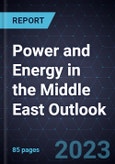The EU Export Opportunity to Drive Power Investments
Russia’s war on Ukraine has unlocked unprecedented growth opportunities for the Middle East as Europe steers away from Russia for energy supply. The European Union’s commitment to end its reliance on Russian energy by 2027 and its focus on renewables and hydrogen offer ME countries a strong business case for energy investments, given that the region has recorded among the lowest levelized cost of energy (LCOE) in renewable power production globally. Also, climate change commitments and economic diversification efforts to transform Gulf Corporation Council (GCC) countries into industrialized economies will drive power and energy investments.
This report covers the ME’s growth environment for the energy and power industry, highlighting trends throughout the value chain and discussing certain developments that impact the industry. Forecasts and analyses rely on 2030 country-specific targets, unveiled power projects (or those in progress), and the publisher's calculations of the energy generation necessary to fulfill a country's demand for electricity. The forecast period's (2023-2030) total achievable revenue denotes the market potential for all industry participants.
With capacity additions happening at an accelerated pace, easy access to financing for renewable projects, and several incentives earmarked to attract foreign investments, this is a market that requires strategic partnerships and critical local market knowledge - both as a legal requirement and as a critical factor determining success.
Key Issues Addressed
- What is the installed capacity of power generation assets in the region, and what is the total market revenue potential?
- What are the major trends impacting the energy industry in the region?
- What are the growth opportunities available for new entrants and existing players?
- What is the market revenue potential in prominent countries in the region?








